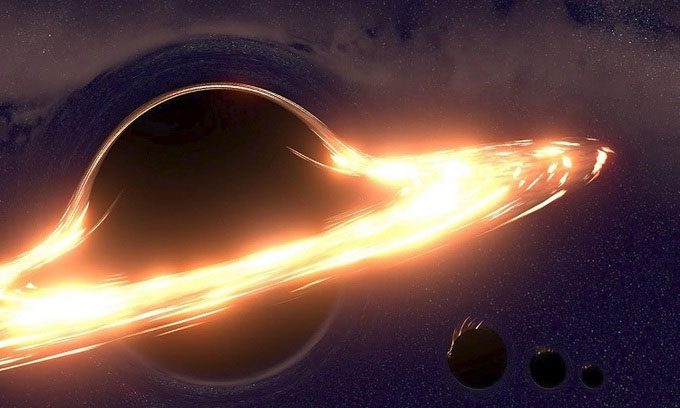Researchers Predict Black Holes Could Grow to Supermassive Sizes, Shedding Light on Dark Matter Mysteries
The Largest Black Hole known to date is TON 618, which has a mass 66 billion times that of the Sun. The immense size of TON 618 raises questions among researchers about whether any black holes larger than this exist.
TON 618 is located approximately 18.2 billion light-years from Earth. In the night sky, it is positioned at the border between the constellations Canes Venatici and Coma Berenices. Astronomers first discovered TON 618 during a survey in 1957 from the Tonantzintla Observatory in Mexico, but they did not initially understand what they had found. Initially, they thought it was a faint blue star, but observations a decade later revealed they were observing intense radiation from matter falling into the colossal black hole.
TON 618 powers a quasar at its center, making it one of the brightest objects in the universe with luminosity equal to 140 trillion Suns. The quasar absorbs light from the gravitational energy of the black hole. Matter surrounding the black hole falls inward, getting compressed and heated, releasing an enormous amount of radiation. While events like supernova explosions can outshine quasars, they only last for a few weeks. In contrast, quasars can shine for millions of years.
However, quasars are so distant that they appear as mere faint dots, even when observed through the most powerful telescopes. Astronomers first detected quasars through their extremely strong radio emissions. Quasars are essentially supermassive black holes that are actively consuming matter. Supermassive black holes grow colossal through mergers with other black holes and by frequently consuming surrounding matter.
The rate of consumption is the limiting factor for black hole size. They can only consume matter over a certain period. As matter falls into the black hole, it heats up and emits radiation. However, this radiation heats the surrounding matter, preventing it from falling into the black hole quickly. This self-regulating process prevents the black hole from growing too rapidly. Astronomers estimate the maximum mass of a black hole based on its rate of consumption, scaled by the known age of the universe. They estimate the maximum mass to be 50 billion solar masses.
In a new study, international scientists refer to black holes greater than 100 billion solar masses as “Colossal Black Holes” (SLAB). According to Florian Kühnel, an astrophysicist at Ludwig Maximilian University in Munich, Germany, theoretically, such black holes could exist.

Simulation of the largest black hole in the universe, TON 618. (Image: Space).
Previously, researchers assumed that supermassive black holes at the center of galaxies formed from smaller black holes merging and accumulating surrounding matter. However, this model struggles to explain how black holes could reach supermassive sizes when the universe was only a few billion years old, according to Bernard Carr, an astrophysicist at Queen Mary University in London, UK, and a co-author of the study.
Another way to account for the formation of both typical supermassive black holes and SLABs is through primordial black holes. Researchers predict that within one second after the Big Bang, random fluctuations in density in the rapidly expanding young universe could concentrate pockets of matter enough for them to collapse into black holes. Primordial black holes could serve as seeds for the formation of larger black holes later on.
If primordial black holes exist, they could help explain what dark matter is. Although most of the matter in the universe is dark matter, researchers do not yet know its composition and have never observed it directly. Currently, they can only study dark matter through its gravitational effects on ordinary matter. Dark matter remains one of the greatest mysteries of the universe, according to Luca Visinelli, a nuclear physicist at the University of Amsterdam, Netherlands.





















































